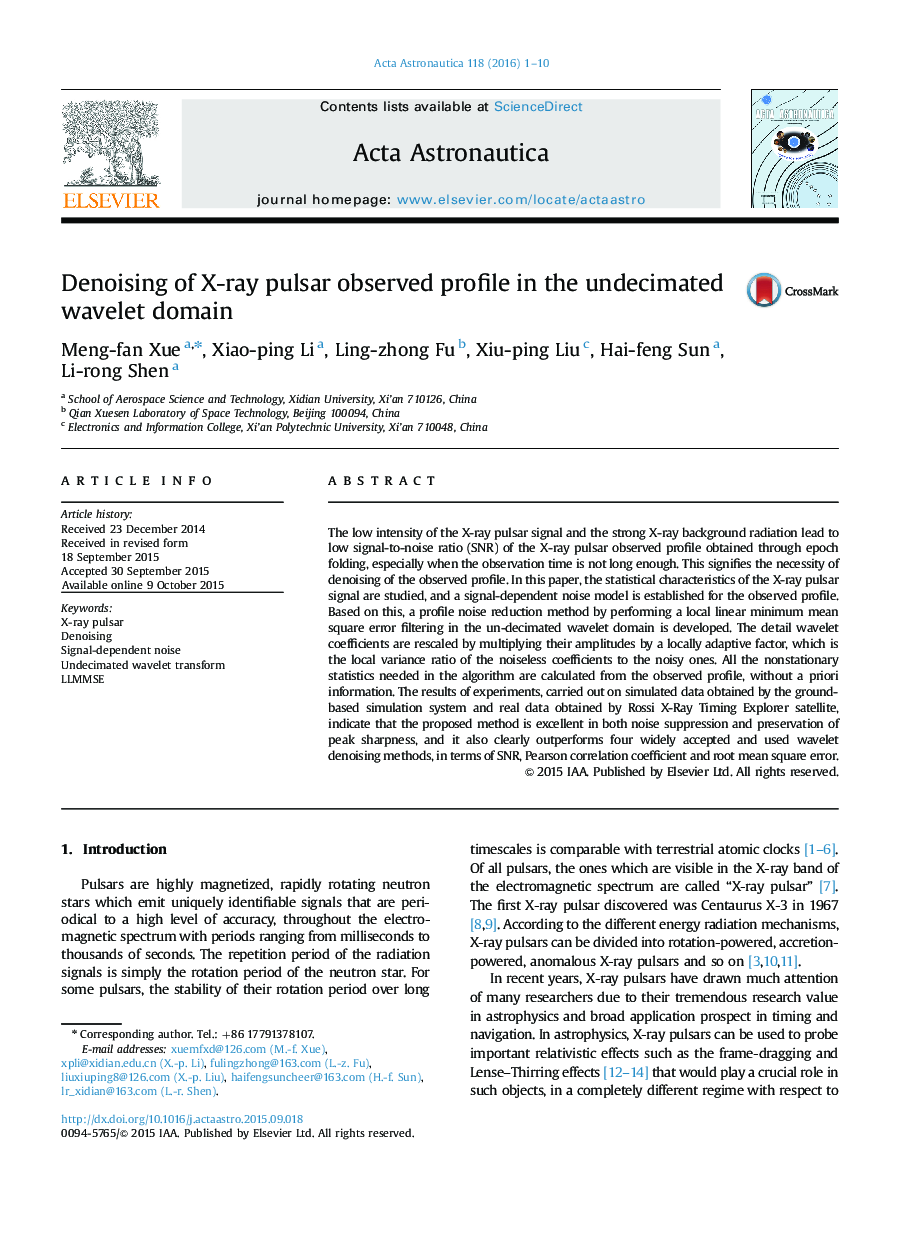| Article ID | Journal | Published Year | Pages | File Type |
|---|---|---|---|---|
| 1714242 | Acta Astronautica | 2016 | 10 Pages |
•A signal-dependent noise model is developed to characterize the observed profile.•A LLMMSE filter in the un-decimated wavelet domain is proposed.•The method does not require any a priori information of original observed profile.•The method is tested against both real and experimentally obtained simulated data.
The low intensity of the X-ray pulsar signal and the strong X-ray background radiation lead to low signal-to-noise ratio (SNR) of the X-ray pulsar observed profile obtained through epoch folding, especially when the observation time is not long enough. This signifies the necessity of denoising of the observed profile. In this paper, the statistical characteristics of the X-ray pulsar signal are studied, and a signal-dependent noise model is established for the observed profile. Based on this, a profile noise reduction method by performing a local linear minimum mean square error filtering in the un-decimated wavelet domain is developed. The detail wavelet coefficients are rescaled by multiplying their amplitudes by a locally adaptive factor, which is the local variance ratio of the noiseless coefficients to the noisy ones. All the nonstationary statistics needed in the algorithm are calculated from the observed profile, without a priori information. The results of experiments, carried out on simulated data obtained by the ground-based simulation system and real data obtained by Rossi X-Ray Timing Explorer satellite, indicate that the proposed method is excellent in both noise suppression and preservation of peak sharpness, and it also clearly outperforms four widely accepted and used wavelet denoising methods, in terms of SNR, Pearson correlation coefficient and root mean square error.
